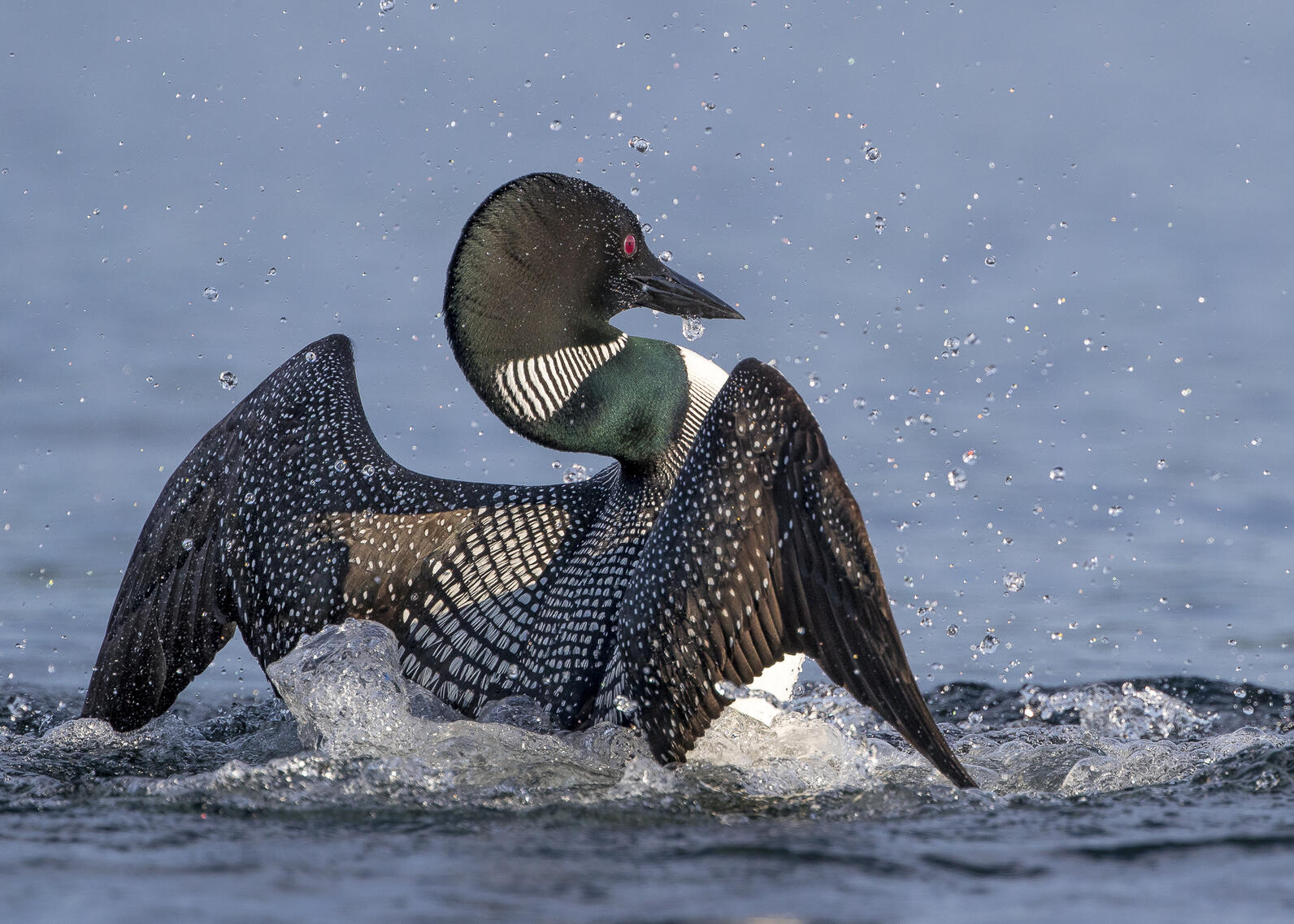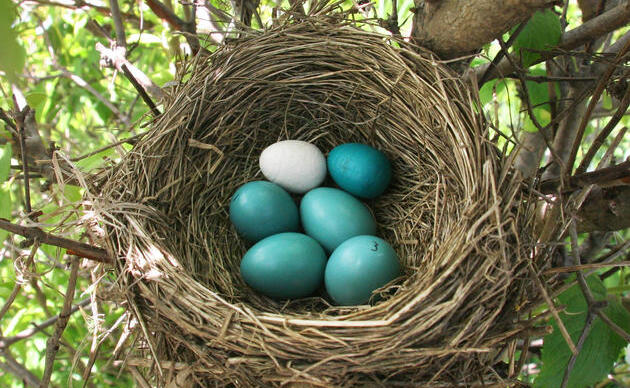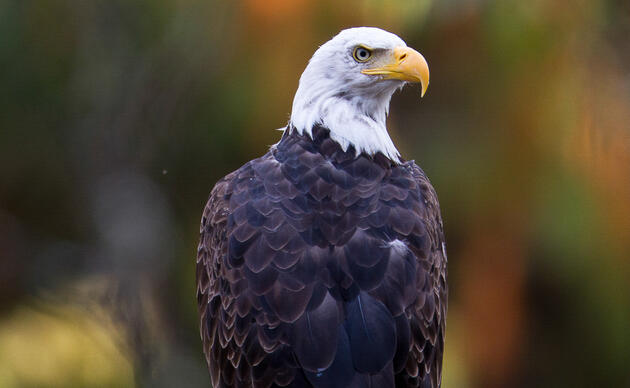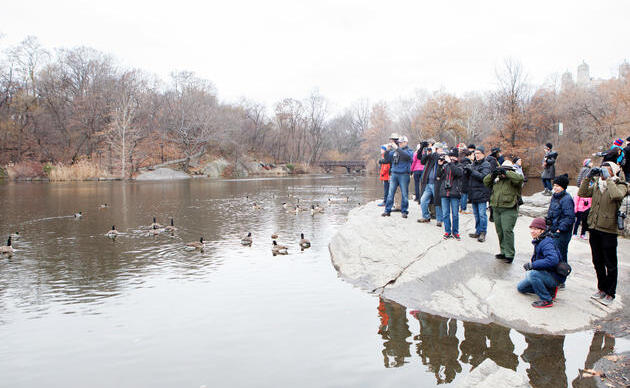
NEW YORK (October 10, 2019) – Today, the National Audubon Society announced a groundbreaking climate report, Survival by Degrees: 389 Bird Species on the Brink. “Two-thirds of America’s birds are threatened with extinction from climate change, but keeping global temperatures down will help up to 76 percent of them. There’s hope in this report, but first, it’ll break your heart if you care about birds and what they tell us about the ecosystems we share with them. It’s a bird emergency,” said David Yarnold, (@david_yarnold), CEO and president of Audubon.
“A lot of people paid attention to last month’s report that North America has lost nearly a third of its birds. This new data pivots forward and imagines an even more frightening future,” Yarnold said. “And, you can use a first-of-its kind web tool to find threatened birds in your zip code, as well as a list of things everyone can do.”
Audubon scientists studied 604 North American bird species using 140 million bird records, including observational data from bird lovers and field biologists across the country.
Audubon’s zip code-based tool, the Birds and Climate Visualizer, helps users understand the impacts to birds where they live, making climate change even more local, immediate and, for tens of millions of bird fans, deeply personal.
“A number of Minnesota’s most iconic species are threatened by climate change,” said Rob Schultz, executive director for Audubon Minnesota and the Upper Mississippi River initiative. “The good news is that we already know what to do: plant native plants, reduce carbon emissions, protect key habitats for birds, and advocate for change. This report reinforces the urgency to take those actions.”
“Birds are important indicator species, because if an ecosystem is broken for birds, it is or soon will be for people too,” said Brooke Bateman, Ph.D., the senior climate scientist for the National Audubon Society. “When I was a child, my grandmother introduced me to the Common Loons that lived on the lake at my grandparent’s home in northern Wisconsin. Those loons are what drive my work today and I can’t imagine them leaving the U.S. entirely in summer but that’s what we’re facing if trends continue.”
Dr. Bateman and her team also studied climate-related impacts on birds across the lower 48 states, including sea level rise, Great Lakes level changes, urbanization, cropland expansion, drought, extreme spring heat, fire weather and heavy rain.
In Minnesota under the certain scenerioes, residents may see far fewer Common Loons, Ruffed Grouse, Sandhill Cranes, Scarlet Tanagers, and many other beloved birds. The conservation work Audubon is doing in floodplain forests, prairie and wetland habitats, and urban areas will become even more important. Individuals are encouraged to invite legislators on birding walks, ask friends to join the Christmas Bird Count, and set an example by reducing energy consumption and supporting clean energy initiatives.
“We already know what we need to do to reduce global warming, and we already have a lot of the tools we need to take those steps. Now, what we need are more people committed to making sure those solutions are put into practice,” said Renee Stone, vice president of climate for the National Audubon Society. “Our elected officials at every level of government must hear from their constituents that this is a priority. Audubon is committed to protecting the places birds need now and in the future and taking action to address the root causes of climate change.”
Audubon has outlined five key steps:
- Reduce your use of energy at home and ask your elected officials to support energy-saving policies that reduce the overall demand for electricity and that save consumers money.
- Ask your elected officials to expand consumer-driven clean energy development that grows jobs in your community – like solar or wind power.
- Reduce the amount of carbon pollution released into the atmosphere. In order to drive down carbon emissions, we will need innovative economy-wide solutions that address every sector of the economy – like a fee on carbon. Another option is to address carbon emissions one sector at a time like setting a clean energy standard for electricity generation.
- Advocate for natural solutions, from increasing wetlands along coasts and rivers that absorb soaking rains to protecting forests and grasslands that are homes to birds and serve as carbon storage banks, and putting native plants everywhere to help birds adapt to climate change.
- Ask elected leaders to be climate and conservation champions.
Enter your zip code into Audubon’s Birds and Climate Visualizer to see how climate change will impact your birds, your community, and the ways you can help.
Audubon’s report is based on the 2014 Intergovernmental Panel on Climate Change (IPCC) report models for 1.5, 2.0 and 3.0 degrees C of global warming. At the highest warming scenario of 3.0 C, 305 bird species face three or more climate-related impacts.
Last month, Science published a study by a joint team of conservation biologists describing a grim picture: a steady decline of nearly three billion North American birds since 1970, primarily as a result of human activities. Climate change will further exacerbate the challenges birds are already facing from human activity.
In 2014, Audubon published its first Birds and Climate Change Report. The study showed that more than half of the bird species in North America could lose at least half of their current ranges by 2080 due to rising temperatures. Audubon’s new findings reflect an expanded and more precise data set, and indicate the dire situation for birds and the places they need will continue.
The full report, visuals and assets are available in the Media Kit.
###
About Audubon
The National Audubon Society protects birds and the places they need, today and tomorrow. Audubon works throughout the Americas using science, advocacy, education, and on-the-ground conservation. State programs, nature centers, chapters, and partners give Audubon an unparalleled wingspan that reaches millions of people each year to inform, inspire, and unite diverse communities in conservation action. A nonprofit conservation organization since 1905, Audubon believes in a world in which people and wildlife thrive. Learn more at audubon.org and on Facebook, Twitter and Instagram @audubonsociety.
Audubon Minnesota is a nonprofit dedicated to addressing the biggest threats to Minnesota’s birds through science, advocacy, outreach, and on-the-ground conservation. Since 1979, Audubon Minnesota has been protecting important places for birds and people. Learn more at mn.audubon.org and on Facebook and Twitter.
Media Contact: Ashley Peters, Engagement Manager, 952-715-1209, apeters[at]audubon.org



